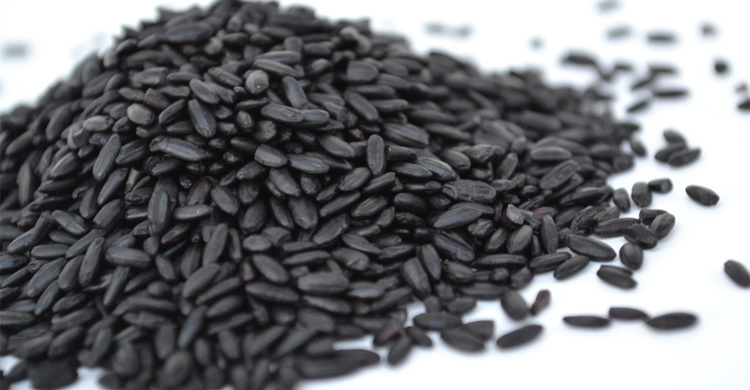Black rice is the latest superfood

A rarity in the food world, those fascinated with it after knowing its health benefits, now have an option to eat it at a restaurant or just grab a packet from a gourmet supermarket and cook it at home.
A great health choice
It is the only rice to contain the antioxidant known as anthocyanins, which is found in dark-hued fruits and vegetables like blueberries, blackberries, dark grapes, dark cherries, purple brinjals, purple cabbage and purple corn amongst others. Nutritionist Dhvani Shah says, "Black rice contains high amounts of antioxidants, dietary fibre, minerals and other anti-inflammatory nutrients. It is the richest source of the antioxidant, anthocyanin, which is known to be cancer fighting, beneficial for heart health and imflammatory conditions."
Has export potential
Slightly tricky to grow in terms of yield, it is harvested only in India and China. In India, it is mainly grown and consumed in Manipur where it is known as Chakhao. It has cultural and traditional significance to the people of Manipur and other parts of Northeast India where no celebration is complete without a delicious serving of black rice. On the occasion of the World Food Day in October, the Indian government also put an action plan in place to promote unique varieties of rice with a prominent status for black rice. As people discover the numerous health benefits that whole grain black rice has to offer and with it being touted as the new cancer fighting super food, which can also prevent heart disease, black rice has a good market potential, especially in the overseas markets, as the demand for the same is growing in the USA, Australia and Europe.
Winner amongst the variety of rice
White rice, red rice and brown rice have been around for long but amongst these, black rice might emerge as the clear winner in nutritional and health benefits. Says clinical nutritionist Kanchan Patwardhan, "While polishing white rice, vitamins and minerals especially Vitamin B2, B6 and B12 in large amounts are lost whereas black rice comes packed with micro nutrients. As compared to other varieties of rice, the glycemic index of black rice is 42, which is a very good score for weight watchers and diabetics."
Pleasant nutty flavour makes it popular
The texture of black rice is a bit heavier as compared to other varieties of rice but its natural flavour is rich and sweet. It has a pleasant, nutty flavour, best enjoyed with coconut milk and in sweetened desserts, particularly rice puddings. Black in colour when harvested, once cooked it turns deep purple. Popular in cuisines in Kerala and North Bengal, it is also a good option to make European salads or Italian dishes like risotto. Currently available at high-end restaurants, it seems to be steadily gathering support. "I had the black sticky rice soup with palm sugar at one of the restaurants in town. It was purple in colour and had the texture of kheer but the taste was completely different. After knowing the properties, I am going to try and make it at home too soon," says homemaker Shanti Sen.
Tips to cook black rice
- Black rice takes longer to cook than white rice so to cut down on cooking time, soak it overnight or much before you start cooking.
-You can cook a batch in advance and keep it in the refrigerator for several days and then use it in varied dishes over the week.
-Remember, the darker the rice, the better it is but the black colour can stain your clothes while cooking.
-Select the right variety of rice for the recipe you choose since there are several varieties of black rice, including long jasmine, glutinous Thai and the short-grained version. The long-grain rice is the true `forbidden rice` and is good for salads, while the short-grained rice created as a hybrid can be adapted to European recipes. The glutinous Thai rice cooks up much like glutinous white rice, making it great to make sushi and rice pudding.
- If you find the taste a bit too earthy, blend the rice kernels into a powder and sprinkle on salads, fish and meat dishes or add dry spices to the powder to make dry chutney.
-To start with, begin by making it in smaller portions and introduce it during regular meals till you adjust to the taste. -TOI
